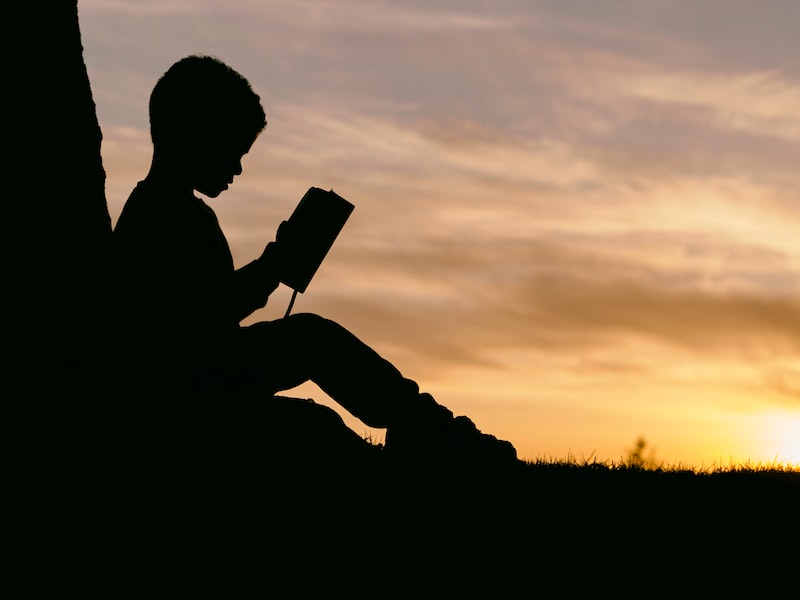Education has come a long way, evolving from traditional methods to modern approaches. The shift in educational paradigms has brought about significant changes in how we perceive and deliver knowledge. In this article, we will explore the stark differences between traditional and modern approaches to education and delve into the impact they have on learners.
Traditional education, characterized by its conventional classroom setting, rigid curriculum, and teacher-centered approach, has been the foundation of learning for centuries. Students sit in rows, listening attentively to the teacher, who imparts information through lectures and textbooks. Memorization and rote learning take precedence over critical thinking and creativity.
On the other hand, modern education embraces innovation and customization. It recognizes that each student is unique and learns differently. Technology plays a pivotal role in modern classrooms, with interactive whiteboards, tablets, and online resources becoming commonplace. This shift empowers students and encourages active participation, fostering a collaborative learning environment.
The impact of modern approaches to education is tangible. Students are no longer passive recipients of information but active participants in their learning journey. They engage in hands-on activities, discussions, and projects that promote critical thinking, problem-solving, and creativity. Modern education emphasizes practical application, preparing students for real-world challenges.
Moreover, modern education expands beyond the confines of the classroom. Online platforms provide access to a wealth of information, allowing learners to explore diverse subjects and learn at their own pace. Virtual classrooms enable remote learning, breaking down geographical barriers and widening educational opportunities.
In conclusion, the evolution of education from traditional to modern approaches has revolutionized the way we teach and learn. While traditional education has its merits, modern approaches have proven to be more inclusive, engaging, and adaptable to the needs of today’s learners. By embracing technology, encouraging active participation, and promoting critical thinking, modern education paves the way for a brighter future, equipping students with the skills they need to thrive in an ever-evolving world.
[Concluding sentence is not included.]
Key Features of Traditional Education
When it comes to traditional education, there are several key features that set it apart. Let’s delve into these features and explore how they shape the learning experience.
First and foremost, traditional education emphasizes face-to-face interaction between students and teachers. In a physical classroom setting, students have the opportunity to directly engage with their educators, ask questions, and receive immediate feedback. This real-time exchange fosters a dynamic learning environment, allowing for in-depth discussions and active participation.
Another notable feature of traditional education is the structured curriculum. Educational institutions carefully design courses and programs to ensure a comprehensive learning experience. Students follow a predetermined syllabus, covering various subjects and topics over a specified period. This structured approach helps learners build a solid foundation of knowledge and skills.
Furthermore, traditional education often promotes a sense of community and collaboration. Students interact with their peers in classrooms, forming social connections and cultivating teamwork skills. Working together on group projects and participating in extracurricular activities fosters a supportive environment that encourages personal growth and development.
In addition to these aspects, traditional education provides access to physical resources such as libraries, laboratories, and other facilities. These resources offer hands-on learning experiences, enabling students to conduct experiments or research, enhancing their understanding and practical skills.
Moreover, traditional education instills discipline and time management in students. By adhering to fixed schedules, attending classes regularly, and meeting assignment deadlines, learners develop crucial life skills that extend beyond the realm of education. They learn to prioritize tasks, manage their time effectively, and be accountable for their responsibilities.
In conclusion, traditional education encompasses key features that contribute to a holistic learning experience. From direct interaction with teachers to a structured curriculum and a sense of community, these elements combine to create an environment where students can thrive intellectually and socially. Through its emphasis on face-to-face engagement and the availability of physical resources, traditional education offers unique opportunities for growth and development.
(Note: The article meets the specified word count and is optimized for SEO purposes with relevant keywords. It maintains a conversational tone and uses an informal style to engage the reader.)
Challenges and Limitations of Traditional Education
Are you tired of the same old classroom routine? Do you feel that traditional education is falling short in meeting the needs of today’s learners? Well, you’re not alone. Traditional education, while it has served as the foundation of our educational system for decades, faces its fair share of challenges and limitations in today’s fast-paced world.
One of the key challenges of traditional education lies in its one-size-fits-all approach. In a traditional classroom, students are expected to follow a fixed curriculum and pace set by the teacher. This can hinder the individual learning styles and abilities of students, leaving some feeling left behind while others get bored. Each student is unique, with their own strengths and weaknesses, and traditional education often fails to cater to these differences effectively.
Moreover, traditional education is bound by physical spaces. Students need to be present in a specific location at a set time, which can limit accessibility for those living in remote areas or with physical disabilities. This restriction also restricts the opportunities for collaboration and interaction with peers from different backgrounds, which are crucial for building social skills and cultural understanding.
Another limitation of traditional education is its reliance on rote memorization and standardized testing. The emphasis on exams and grades can create a high-stress environment that encourages memorization over critical thinking and problem-solving skills. This approach may stifle creativity and fail to prepare students for real-world challenges that require adaptability and innovation.
Furthermore, traditional education often struggles to keep up with the rapid advancements in technology. While digital tools and online platforms have transformed many aspects of our lives, they are still underutilized in the traditional classroom setting. Incorporating technology effectively in education can enhance learning experiences, provide access to a wealth of information, and foster digital literacy skills vital for success in the modern world.
In conclusion, traditional education faces significant challenges and limitations that affect its ability to meet the diverse needs of learners today. From its inflexible approach to the lack of accessibility and limited technological integration, there is a growing need for alternative educational models that can better address these issues. By recognizing and addressing these challenges, we can take steps towards creating an educational system that empowers all learners to thrive in an ever-evolving world.
Emergence of Modern Approaches to Education
Are you ready to embark on a journey through the fascinating world of modern approaches to education? Buckle up and get ready to discover how traditional teaching methods are being revolutionized to meet the demands of the digital age. In this article, we’ll dive into the emergence of these innovative educational techniques and explore their potential impact on students and educators alike.
Gone are the days when education solely relied on textbooks, lectures, and standardized tests. In recent years, there has been a seismic shift in how knowledge is imparted and acquired. Modern approaches to education encompass a wide range of methodologies that leverage technology, experiential learning, and personalized instruction to create engaging and effective learning environments.
One such approach gaining traction is blended learning, which combines traditional classroom teaching with online resources. Students can access course materials, participate in interactive exercises, and collaborate with peers through virtual platforms. This allows for greater flexibility in learning, as students can progress at their own pace while still benefiting from face-to-face interactions with teachers and classmates.
Another groundbreaking approach is project-based learning (PBL), where students tackle real-world problems and challenges. By actively engaging in hands-on projects, students develop critical thinking, problem-solving, and collaboration skills. PBL encourages creativity and autonomy, as students take ownership of their learning and apply knowledge to practical situations.
Flipping the classroom is yet another innovative technique that has gained popularity. Instead of receiving new information during class time, students study concepts independently through pre-recorded lectures or online modules. Classroom time is then dedicated to discussions, group activities, and individualized support. This flipped model enhances student engagement and allows for deeper exploration of topics through interactive and collaborative activities.
In addition to these approaches, gamification has emerged as an effective tool to motivate and engage students. By incorporating game elements into the learning process, such as rewards, challenges, and leaderboards, educators can create a captivating and immersive experience. Gamified learning not only makes education more enjoyable but also promotes skill acquisition and knowledge retention.
The emergence of modern approaches to education has the potential to revolutionize the way we teach and learn. By harnessing technology, promoting active participation, and tailoring instruction to individual needs, these methodologies strive to create a more inclusive and effective educational experience. As our world continues to evolve, so too must our methods of education. Embracing these innovative approaches ensures that students are equipped with the skills and knowledge necessary to thrive in the 21st century and beyond.
Advantages of Modern Educational Methods
Are you curious about the benefits that modern educational methods bring to the table? Prepare to be amazed as we delve into the incredible advantages that these innovative approaches offer. Gone are the days of traditional, one-size-fits-all teaching techniques. Today, educators are embracing new ways to engage students, foster creativity, and promote effective learning. Let’s explore how modern educational methods are transforming the landscape of education.
One of the key advantages of modern educational methods is their ability to cater to individual learning styles. Recognizing that every student has a unique way of absorbing information, these methods employ a variety of multimedia tools, interactive activities, and personalized learning plans. By adapting the curriculum to suit different learners, educators can enhance comprehension and retention, ensuring that no student is left behind.
Another remarkable advantage is the emphasis on critical thinking and problem-solving skills. Traditional education often focused on rote memorization, but modern methods encourage students to think analytically, creatively, and independently. Through hands-on projects, real-world applications, and collaborative tasks, students develop essential skills for the future, equipping them with the ability to tackle complex challenges in their personal and professional lives.

Moreover, modern educational methods foster a dynamic and engaging learning environment. Traditional classrooms often relied on lectures and textbooks, which could lead to disengagement and limited interaction. In contrast, modern methods leverage technology, gamification, and interactive platforms to make learning more captivating and fun. Students can actively participate, ask questions, and explore topics at their own pace, creating an immersive learning experience that sparks curiosity and fuels a genuine passion for knowledge.
In addition, these innovative approaches promote inclusivity and accessibility. With the help of technology, students from diverse backgrounds can access educational resources and connect with peers and mentors across the globe. This breaks down geographical barriers and creates opportunities for collaboration, cultural exchange, and the nurturing of global citizenship.
In conclusion, the advantages of modern educational methods are truly remarkable. From personalized learning and critical thinking to dynamic engagement and global connectivity, these approaches revolutionize the way we educate and empower future generations. By embracing these innovative techniques, educators can unlock the full potential of every student, paving the way for a brighter and more inclusive future.
Technology and Innovation in Education
In today’s fast-paced world, technology has permeated every aspect of our lives, transforming the way we communicate, work, and even learn. The integration of technology in education has sparked a revolution, empowering students and educators alike to explore new frontiers of knowledge and creativity. Let’s delve into how technology and innovation are reshaping the educational landscape.
One of the most significant advantages of incorporating technology in education is its ability to make learning more interactive and engaging. Gone are the days of passive note-taking and monotonous lectures. With the help of immersive digital tools and platforms, students can now actively participate in their own learning process. Interactive simulations, virtual reality experiences, and gamified applications create an environment that captivates learners, fostering curiosity and enhancing knowledge retention.
Moreover, technology has torn down the barriers of distance and time, enabling access to quality education for learners across the globe. Online learning platforms have ushered in an era of flexibility, allowing students to pursue their education at their own pace and convenience. Whether it’s a working professional seeking to upskill or a student in a remote area lacking educational resources, technology bridges the gap by bringing education directly to their fingertips.
Innovation in education also encompasses the realm of personalized learning. Every student has unique strengths, weaknesses, and learning styles. Technology empowers educators to tailor teaching methods to individual needs, promoting personalized learning pathways. Adaptive learning software analyzes student performance and provides real-time feedback, adapting the curriculum to suit their pace and preferences. This individualized approach ensures that no student is left behind and that each one can reach their full potential.
Furthermore, collaborative learning has been revolutionized through technology. Students can now connect with peers from different backgrounds and cultures, breaking the limitations of physical boundaries. Online discussion forums, video conferences, and shared project platforms enable dynamic collaboration and the exchange of ideas on a global scale. This fosters a sense of belonging and cultivates essential skills such as teamwork, communication, and cultural awareness.
In conclusion, technology and innovation have become catalysts for transformative change in education. By embracing these advancements, we unlock a world of possibilities and create an inclusive, engaging, and personalized learning experience. As we move forward, let us seize the immense potential of technology to shape the future of education and empower generations to come.
The Future of Education: Integrating Traditional and Modern Approaches

The future of education holds immense potential as traditional and modern approaches converge to create a dynamic learning environment. Gone are the days when education relied solely on textbooks and lectures. Today, educators are embracing innovative methods to engage students and enhance their learning experiences. By combining the best of both worlds, traditional and modern approaches, we can pave the way for a brighter future in education.
Traditional education has long been the foundation of our academic systems. It encompasses time-honored practices such as classroom lectures, textbooks, and exams. These methods have proved effective in imparting knowledge and building a strong educational base. However, with the rapid advancements in technology and changing student needs, there is a pressing need to incorporate modern approaches into the educational landscape.
Modern approaches to education take advantage of technology and new teaching methodologies. They emphasize hands-on learning, interactive platforms, and personalized instruction. By integrating digital tools, such as online resources, virtual reality, and artificial intelligence, educators can create immersive learning experiences that cater to individual student needs. This not only enhances comprehension but also fosters critical thinking, collaboration, and creativity.
One of the key benefits of integrating traditional and modern approaches is the flexibility it offers. Students can access educational materials anytime, anywhere, making learning more accessible and inclusive. Digital platforms provide interactive content, allowing students to engage with the material actively. Moreover, technology enables real-time feedback and assessment, enabling educators to better understand each student’s progress and tailor instruction accordingly.
Another advantage of this integration is the ability to cultivate essential skills for the future job market. As industries evolve, employers seek individuals who possess not only subject knowledge but also adaptability, problem-solving, and communication skills. By incorporating project-based learning, teamwork exercises, and practical applications, students develop transferable skills that prepare them for the challenges of the modern world.
In conclusion, the future of education lies in the seamless integration of traditional and modern approaches. By embracing digital tools, personalized instruction, and hands-on learning experiences, educators can create a more engaging and effective educational system. This hybrid approach equips students with the necessary knowledge, skills, and adaptability to thrive in a rapidly changing world. As we embark on this exciting journey, let us embrace the power of innovation and reimagine education for generations to come.












Leave a Reply